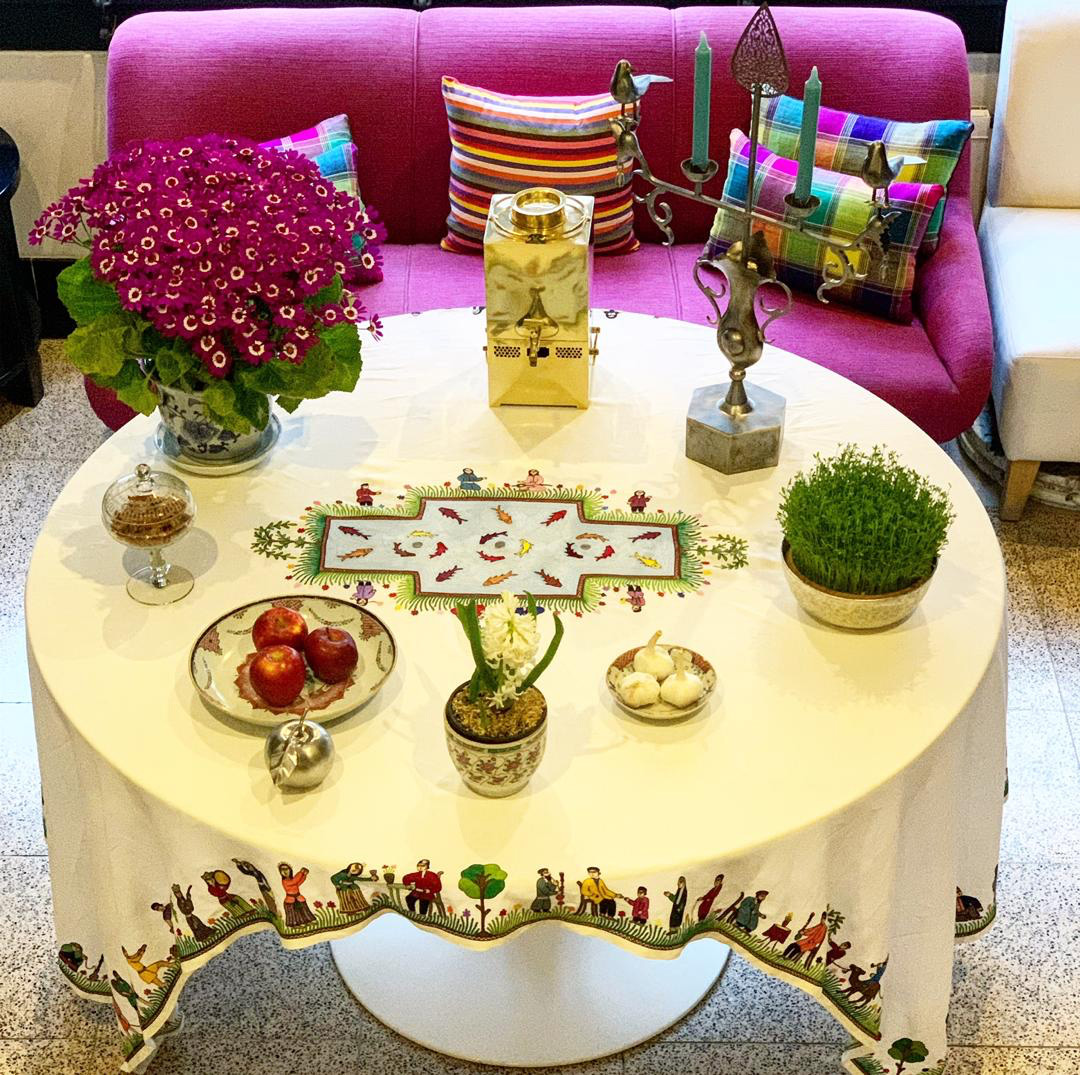Today, the first of April 2020, a new glance at the Persian Orient where Sizdah Bedar is celebrated, a belief as old as the hills. No joking.
First of April in the Gregorian calendar, we are also the day of Sizdah Bedar, “Thirteen Outdoor”, or the thirteenth day of Nowruz, the March equinox and the New Year on the Persian calendar. The belief came from the ancient Persians of Zoroastrian religion who wanted the twelve constellations of the Zodiac to influence the months of the year and that each reign on earth for a thousand years. At the end of this cycle, the sky and the earth would sink into chaos. And so, the thirteenth day after Nowruz, everybody goes outside to ward off the evil spirit. This is why the Iranians and beyond, in the vast territory of the ancient empires, go out and picnic in the great outdoors and celebrate the thirteenth day after Nowruz. This year 2020, feast can’t be conjured up outside, but let’s assume that C19 scares off the maledictions.
Usually, not in 2020, this day is also the occasion to throw the sabzeh, arranged for the Haft-sin, in to moving water to exorcise the demons (divs) of the household. The sabzeh, a symbol of rejuvenation, consists of a pot of wheat, barley, mung bean or lentil sprouts. The sazbeh is one part of the seven symbolic Haft-sin objects which the household puts out so as to represent nature during Nowruz. Arranged on a table therefore are the sabzeh, some samanu (puddings made of wheat germ) which symbolise strength, senjed (Persian olives) symbolising love, serkeh (vinegar) symbolising patience, somaq (sumac) symbolising dawn, seeb (apples) symbolising beauty and seer (garlic) symbolising health. Its name comes from haft which is to say 7 and from Sin, which is the 15th letter of the Persian alphabet which is written “س”, all the elements of Haft Sin begin with this letter. Sometimes to this display, whose aesthetics attest to the good taste of the household, are added other elements beginning with the letter “س”. They are sonbol (hyacinth) symbolising spring , a sekkhe (a coin) symbolising prosperity and a saat (clock), symbolising time.
Sizdah Bedar is also the moment to make wishes by making a knot of a green herb (sabzi) which is also thrown in to flowing water. Traditionally, young boys and girls make a wish to be married before the next Sizdah Bedar by attaching sabseh stalks before throwing them in the water.
During Sizdah Bedar, as for the first of April, it is also the occasion to make jokes. The first traces of this custom date back to 536 BC during the Achaemenid Empire, or a millennium before the first trace of such a custom in the west where the first testimony of such a custom was evoked in 1392 in the Canterbury Tales, see, in 1466 ,Pierre Michault’s Doctrinal of the present time. Looking closer, the Iranians are ahead in the subject but we will wait until next year to tease them.







